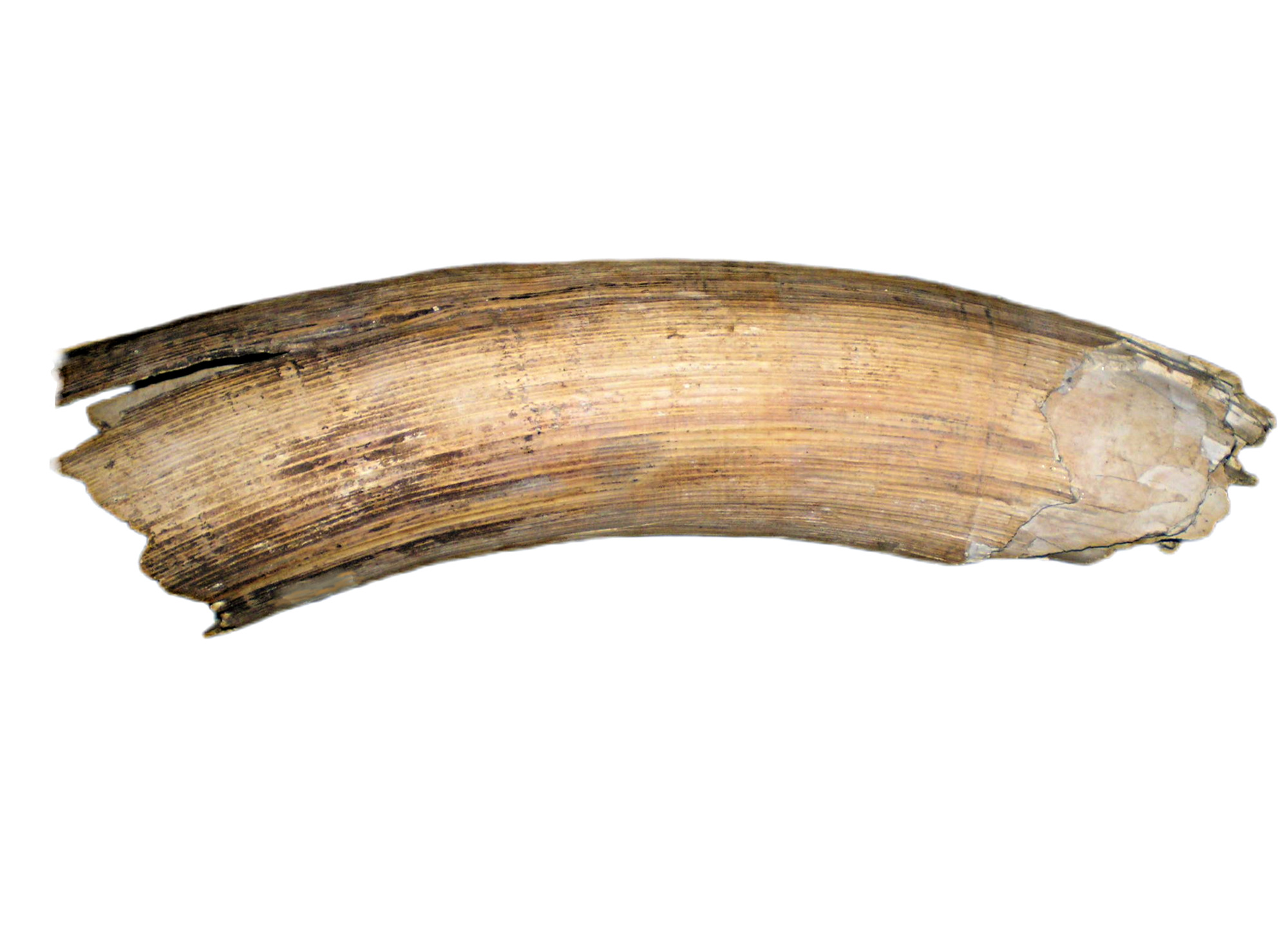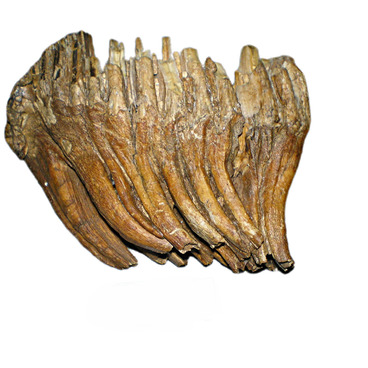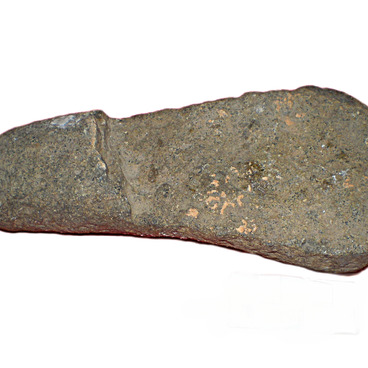Fragment of a mammoth tusk
The tusk is a highly developed, protruding tooth. The tusk is broken off, small in size. the outside is light brown in color, the surface is ribbed to the touch. Inside is gray, layered. It resembles a rotten tree.
When mammoths are born into the world, they have small “tusks” several centimeters long. They are almost impossible to see on the front of the baby’s skull.
In the future, the milk “tusks”, after their loss, are replaced by real tusks that grow throughout the life of the animal. When studying the well-preserved remains of mammoths found in Siberia, scientists found that the milk tusks of the cubs were covered with a thin layer of cement and a cap with enamel, which later disappeared when the tusks appeared from the alveoli.
Scientists manage to unravel the life of an adult by the size of the tusks and their annual rings. Annual rings of mammoth tusks can be compared with the rings of tree trunks that appeared during the growth of the animal. By counting the rings on the slice, scientists accurately determine at what age the animal died. Tusks, as a rule, have a bend inwards. They also allowed scientists to determine the growth, size of an individual, as well as its habitat. According to the size of the tusks using spec. For example, scientists have the ability to determine how many times a female managed to bear offspring.
Mammoth tusks grow from special tubelike cranial outgrowths called alveoli, and have a characteristic feature of location and twisting. Tusks, as a rule, grow with a bend up and to the sides, and the left tusk has a growth direction to the right side, and the right one to the left, and as if they look at each other. Such a characteristic feature of the location of the tusks, as a rule, is inherent in males.
The mammoth tusk of a large male could reach four, and even four and a half meters in length. The weight was up to one hundred kilograms. At the base, the diameter of one tusk was about 18-19 cm. Mammoths often used tusks for survival, such as hunting, or digging up snow in search of food. According to the remains of the tusks, it was possible to calculate that it was for these reasons that during the life of ancient animals, the tusks often had cracks and chips, and also erased along the outer edge.
The tusk is a highly developed, protruding tooth. The tusk is broken off, small in size. the outside is light brown in color, the surface is ribbed to the touch. Inside is gray, layered. It resembles a rotten tree.
When mammoths are born into the world, they have small “tusks” several centimeters long. They are almost impossible to see on the front of the baby’s skull.
In the future, the milk “tusks”, after their loss, are replaced by real tusks that grow throughout the life of the animal. When studying the well-preserved remains of mammoths found in Siberia, scientists found that the milk tusks of the cubs were covered with a thin layer of cement and a cap with enamel, which later disappeared when the tusks appeared from the alveoli.
Scientists manage to unravel the life of an adult by the size of the tusks and their annual rings. Annual rings of mammoth tusks can be compared with the rings of tree trunks that appeared during the growth of the animal. By counting the rings on the slice, scientists accurately determine at what age the animal died. Tusks, as a rule, have a bend inwards. They also allowed scientists to determine the growth, size of an individual, as well as its habitat. According to the size of the tusks using spec. For example, scientists have the ability to determine how many times a female managed to bear offspring.
Mammoth tusks grow from special tubelike cranial outgrowths called alveoli, and have a characteristic feature of location and twisting. Tusks, as a rule, grow with a bend up and to the sides, and the left tusk has a growth direction to the right side, and the right one to the left, and as if they look at each other. Such a characteristic feature of the location of the tusks, as a rule, is inherent in males.
The mammoth tusk of a large male could reach four, and even four and a half meters in length. The weight was up to one hundred kilograms. At the base, the diameter of one tusk was about 18-19 cm. Mammoths often used tusks for survival, such as hunting, or digging up snow in search of food. According to the remains of the tusks, it was possible to calculate that it was for these reasons that during the life of ancient animals, the tusks often had cracks and chips, and also erased along the outer edge.


